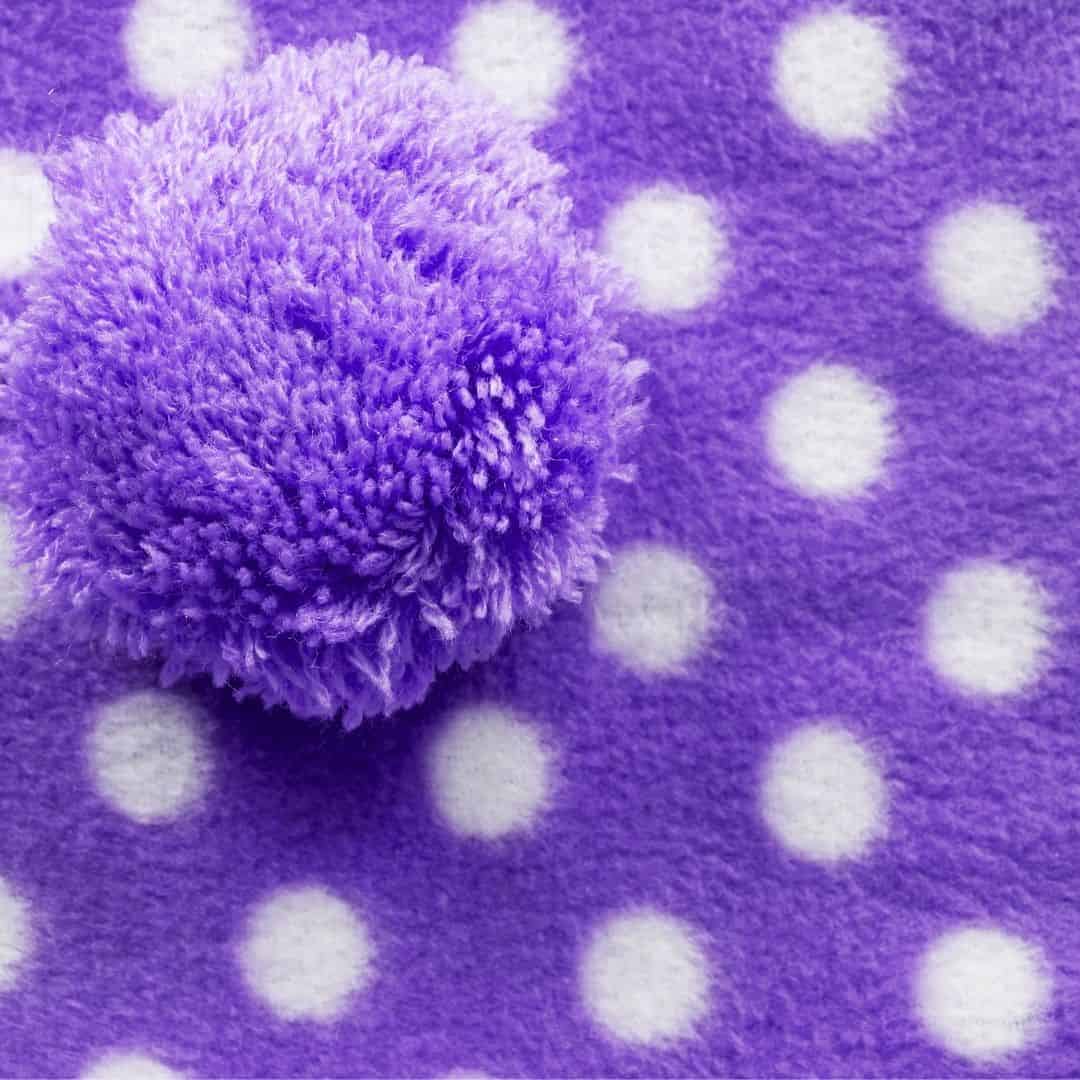*This post may contain affiliate links. As an Amazon Associate we earn from qualifying purchases.
7 No Sew Fleece Projects
I can’t even tell you how excited I am to share these no-sew fleece projects with you. If you know me, I’m so challenged when it comes to sewing machines. Truly I’ve tried but well, I just don’t have to when it comes to so many fun projects like these! And let’s not forget those awesome no-sew pillows, right?!
Get ready, cause these are going to be the hit at football games, tailgates, sofa games, camping, and well, gifts!!! Fully customize your colors, prints, and Oh Emmmm Geeeeee… the sky is the limit!
See, I told you I was excited. Be sure to check the very end for another little FYI.. I think many of you would love to know.

What is Fleece?
Fleece is made by weaving very fine fibers. It’s like a light fabric that can be brushed into a fluffy, thick one. Most popular and commonly used fleece for projects are polyester and polyester blends. They are easy to clean, highly durable.
My favorite part of using fleece is being able to cut without having edges fray, no need to baste edges or hem.
How wide can I buy my fleece?
Most fleece is sold in 58″ widths. You can often get discounts when buying a full bolt of fleece fabric, which is 10 yards long.
Wide fleece is available yet harder to come by. I’ve come across it seasonally at our fabric stores (winter usually). It runs approx 108″ wide.
Where can I buy fleece?
Anywhere you find fabric, so fabric stores, hobby stores often carry it as well. Walmart, Amazon also carry fleece fabric. Etsy has some great custom fleece prints for those very special projects.
How much fleece do I need to make a no tie fleece blanket?
Blankets are made from 2 pieces of fleece tied together. Typically each side is a different color or print. I am partial to prints on both sides. but most of what I see are solid on one side, print on the other. The mix is up to you, your decor or who you are gifting to. The sky is the limit. There are new fleece colors, prints coming out so often you’ll never run out of new ideas.
| Blanket | Common Bed Sizes | Side One | Side Two | |
|---|---|---|---|---|
| Baby/Youth | 1 1/2 yards | 1 1/2 yards | ||
| Throw | 2 yards | 2 yards | ||
| Twin | bed: 38″ width x 75″ length | 2.5 yards | 2.5 yards | |
| Full | bed: 53″ width x 75″ length | 2.5 yards | 2.5 yards | |
| Queen | bed: 60″ width x 80″ length | 3 yards | (wide width needed) | 3 yards |
| King | bed: 76″ width x 80″ length | 3 yards | (wide width needed) | 3 yards |
1. This No-Sew Fleece Blanket is much fancier than any other I’ve seen.
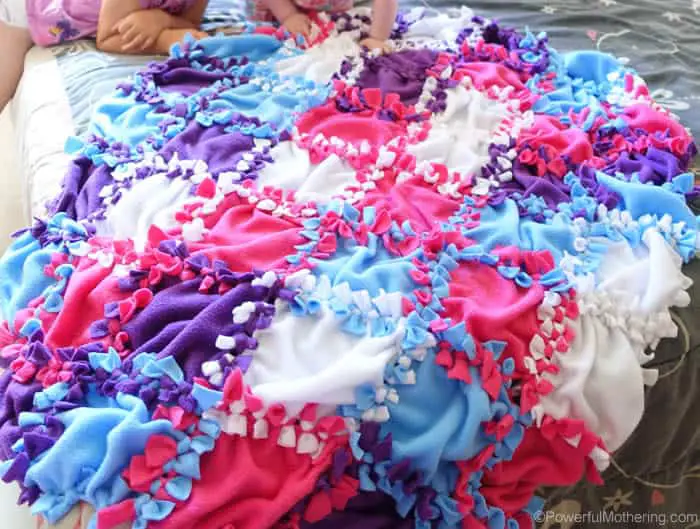
2. Does your dog have a blanket? They will love this No-Sew Dog Blanket.

3. Your cat will thank you when you make them this No-Sew Cat Bed.
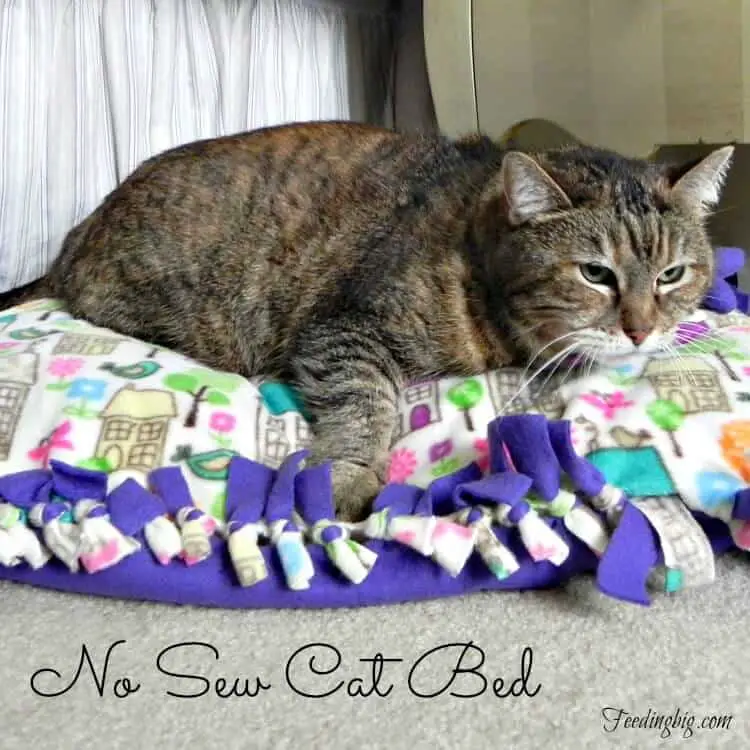
4. Your daughter’s American Girl Doll will love this No-Sew Doll Sleeping Bag.
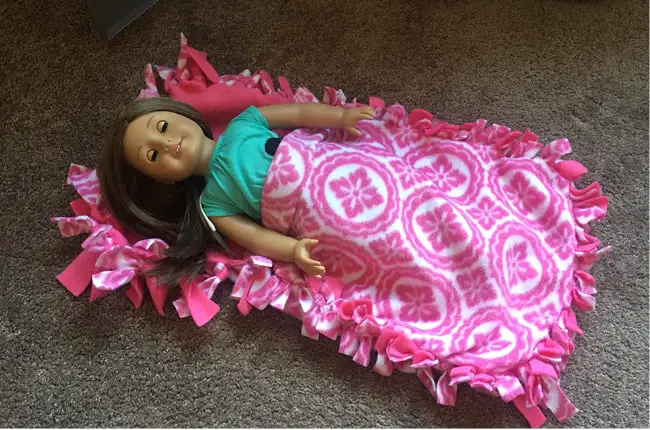
5. Save your crib rails from teething toddlers with this No-Sew Crib Rail Cover.
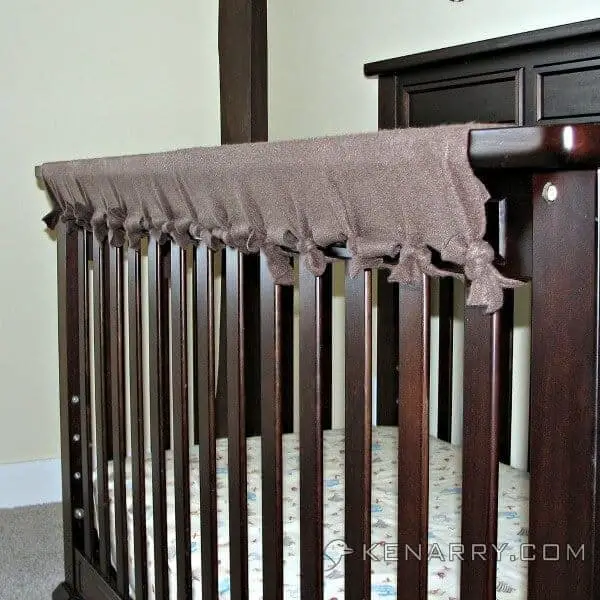
6. This adorable No-Sew Pouch is perfect for toting around small treasures.
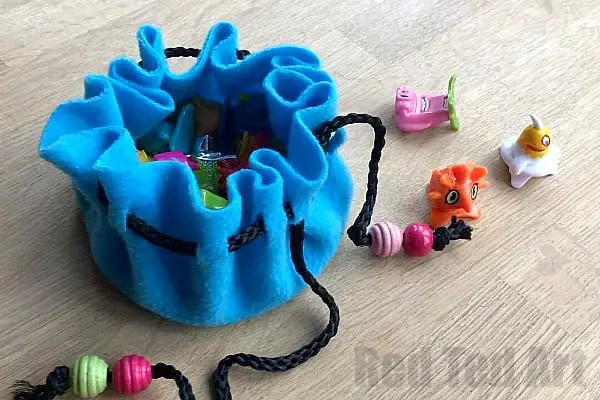
7. Your dog will be one happy puppy when you make this No-Sew Dog Bed Cover.
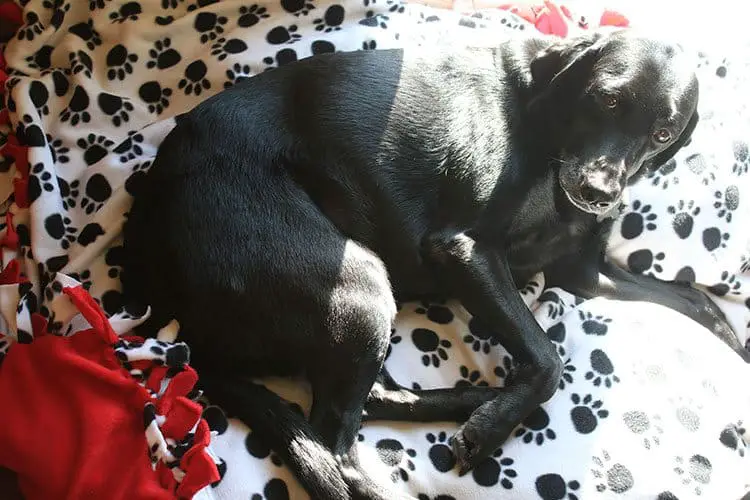
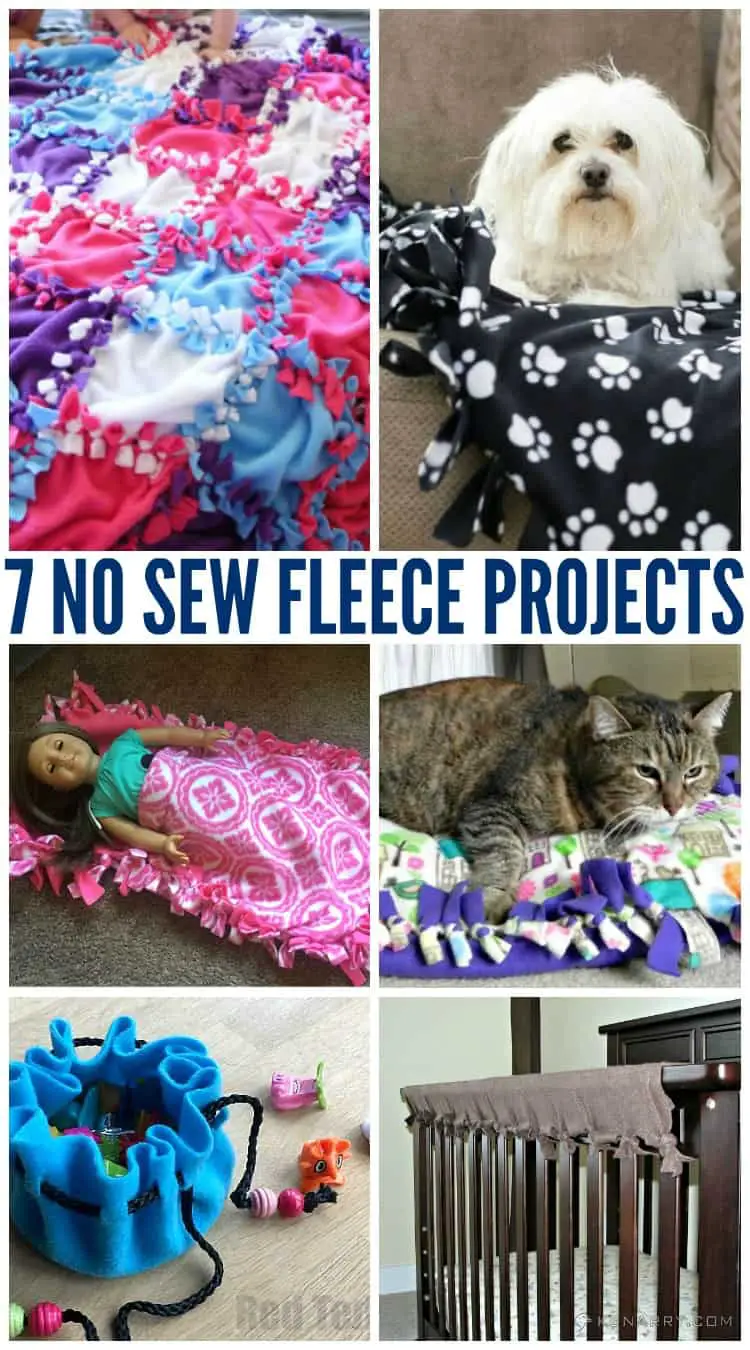
Hey, thanks for sticking around and checking the bottom of this post. So, a friend showed me how to make no-sew fleece projects a few years back, so if you have questions please drop me a line, I’ve made more than you want to know about!!
Making your own homemade blanket is an excellent way to save money. But if you’re not careful when choosing the fabric and cutting it up, then your end product may be less than ideal.
If you want to create a quality blanket that doesn’t require sewing or any other special skills, here are some guidelines on what kind of fabric works best and how large of pieces you should use.
What Type Of Fleece Is Best For No Sew Blankets?
Fleece can range from super soft like cashmere (around 120 denier) all the way to extremely durable flannels at around 2,000 denier. The higher the number, usually the better the durability. However, this does mean they’ll get heavier with weight — so you might have to adjust where you hang them in your closet depending on which one you choose.
The most popular choice among knitters today is probably Tencel®, which is made by DuPont out of wood pulp fibers derived from sustainable forests. It’s great because it has a nice drape and won’t pill too easily, plus its breathability means it will help regulate body temperature while keeping you warm during those cooler winter months. You could also opt for bamboo blends such as Bamboo Silk® or Supima® cotton, both of which are 100% organic and made from sustainably grown bamboo.
They still work just fine for tie-and-patch blankets, since their lightness makes them easy to move around without feeling bulky.
One last option worth considering is wool, and there are multiple types including merino, alpaca, sheep, goat, and mohair. While these fabrics tend to run more expensive, they are also very high quality and quite durable, hence why they were once used in military uniforms.
One thing to keep in mind though is that wool requires extra care: Always clean and dry thoroughly after washing, and never iron directly over anything containing heat (such as radiators). If you plan to go this route, we recommend checking out our guide to cleaning wool sweaters for tips on getting stains off that heavy material.
Also consider whether you prefer knits or wovens, as each provides different benefits. Knit fabrics stretch slightly, whereas woven ones generally hold their shape well. Wovens are typically easier to cut into smaller sizes, however. To learn about the differences between knits and wovens, read this article. And remember: As long as you pick a decent fabric, either type will work just fine!
Fabrics labeled “Best For Blankets” or “Warmth Guide” are mostly suitable for double-sided blankets, i.e., two separate layers sewn together. Those marked “Cool Comfort,” “Cozy Cuddle,” “Light Weight,” etc. are meant for single-layered blankets.
If you’ve picked a wool blend, then you’ll likely only need 3 yards total. That said, if you’re going with something really thick, like fleece, then you’ll definitely want to allocate 4-6 yards per layer. This gives you enough room to add decorative fringe later on down the line.
Is Polar Fleece The Same As Microfleece?
Polar fleece and microfleece are different things. Unlike microfleece, polar fleece actually feels similar to plush. Polar fleece is lightweight, thin, often transparent, and comes in various weights from ultra-soft to hard-as-nails.
Though it sometimes gets compared to polyester, it isn’t technically a synthetic fiber. Instead, it’s produced through a process called air gap spinning, which involves melting and stretching acrylic fibers under extreme temperatures and pressures. A lot of people confuse it with another brand name known for producing similar products, Polartec®, but they differ significantly in terms of performance.
Polar fleece tends to be warmer than microfleece, but it weighs less and is therefore bulkier overall. Its main drawback is that it can feel scratchy against sensitive skin, especially if you have allergies or eczema. So if you’re looking for something softer yet warmer, try opting for microfiber instead.
You can purchase polar fleece online via sites such as Amazon and eBay, or local stores such as Target, JCPenney, Kohls, Macy’s, Nordstrom Rack, and Loehmann’s.
While fleeces come in endless colors, patterns, textures, and thicknesses, the easiest way to narrow things down is by picking based on what color(s) you want. Here are three common options to look out for.
White/Cream
These neutral tones give your blanket a classic appearance and pair perfectly with almost everything. Plus, white is the safest bet for kids’ blankets because it’s unlikely to stain or become damaged even if handled roughly. Also note that lighter shades tend to appear brighter than darker ones.
Black/Maroon
Black represents power and authority, so using black in your blanket conveys strength and sophistication. On top of that, maroon signifies elegance and style, and looks gorgeous paired with royal blue or navy. Just be sure to avoid bright red, which brings attention to itself rather than whatever else is underneath.
Multiple Colors
Many modern designs feature several colors, which creates interesting contrasts within the blanket. Look for prints featuring contrasting hues (for instance, purple and orange), geometric shapes, polka dots, animal print motifs, diamonds, hearts, stripes, plaids, checks, and grids.
Should You Wash The Fleece Before Making A Tie Blanket?
It’s recommended that you always lay new clothing flat to remove wrinkles beforehand, but did you know this applies equally to bed linens? In fact, according to Cotton Incorporated, you shouldn’t wash sheets until right before putting them away — otherwise, you risk damaging elasticity.
Since fleece is naturally textured, washing it prior to stitching can result in fraying, discoloration, holes, and other imperfections. To prevent that, simply rinse gently in cool water with mild detergent. Afterward, allow it to completely dry inside a mesh bag overnight. Then fold it neatly and put it back in your wardrobe until needed next time.
As far as laundering ties goes, if you’d like to preserve the original texture, skip prewashing. Most fleece projects call for hand washing in cold water with mild soap. Be mindful of tags regarding drying times, since fleece absorbs moisture quickly. Once again, dry it indoors in a mesh bag overnight first.
What Is A Good Size For A Fleece Tie Blanket?
When shopping for materials, you’ll notice that fleece blankets come in varying widths. Generally speaking, they fall into four categories: small, medium, wide, and extra-wide. Each is measured by its length across the middle, so take this guideline into account when planning your blanket dimensions.
Smaller versions measure anywhere from 30 inches to 44 inches, medium ranges from 60 to 80 inches, wide runs from 90 inches to 144 inches, and extra-wide measures from 150 inches to 200 inches. Of course, you can also buy larger blankets if you prefer.
Here’s a helpful tip if you haven’t purchased any measuring tape recently: Use the distance from your thumb to index finger to determine the measurement of a standard sweater sleeve. For pants, divide that amount by 2.5 to convert to inch measurements. Finally, multiply the resulting figure by 7/8 to determine the general size of the item you’re interested in buying. Using this method ensures accuracy and consistency every time.
And now that you know what kinds of fabrics to look out for, you can start exploring all the ways you can turn old t-shirts, hoodies, jackets, scarves, and other clothes into cozy blankets.
I’ve passed along this fun skill to a bunch of friends and oh, did you guess already? A few of them made out really really well selling them on yard sale pages around the holidays. I mean really well! And ummm, Etsy?!! Oh yeah, these fun little no sew diy’s have income potential friends!
Can NOT wait to hear all about the colors and prints you crush on and make. A big favorite is sports teams too. Yes, these are great ‘guy gifts’!

